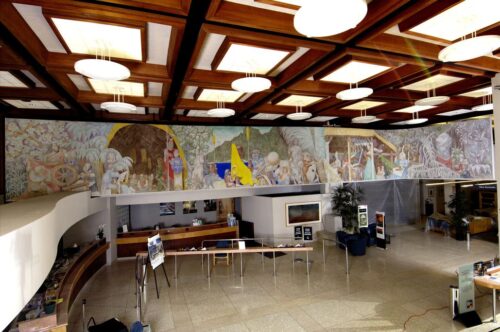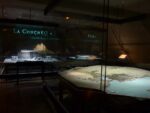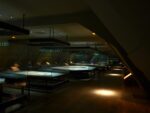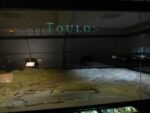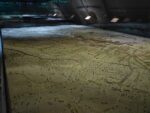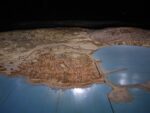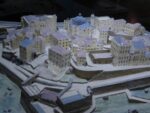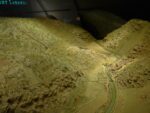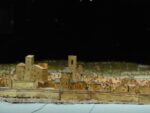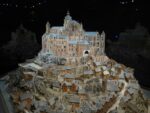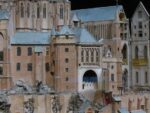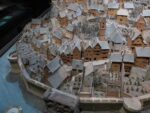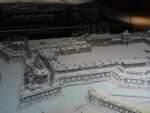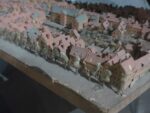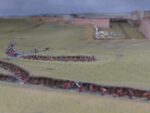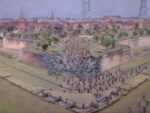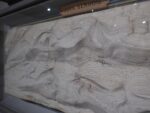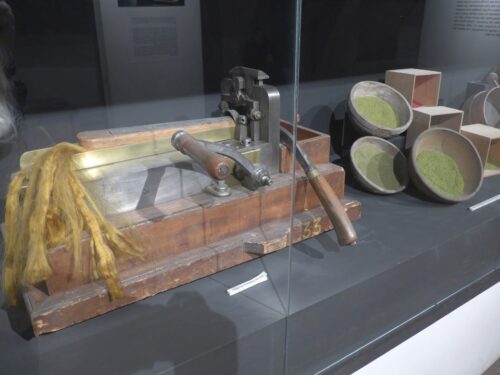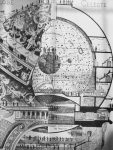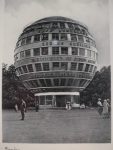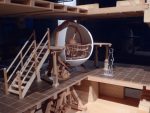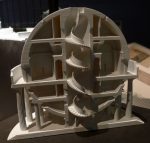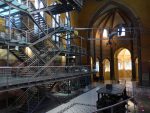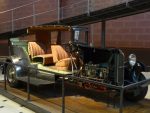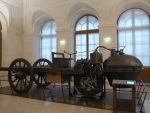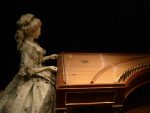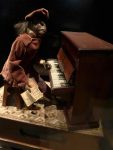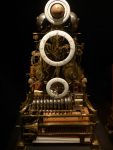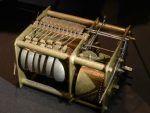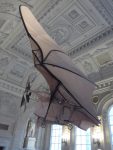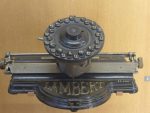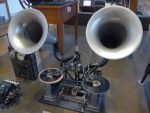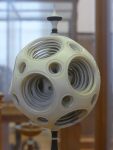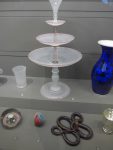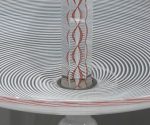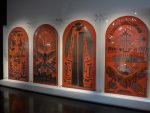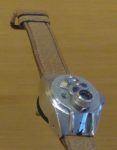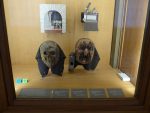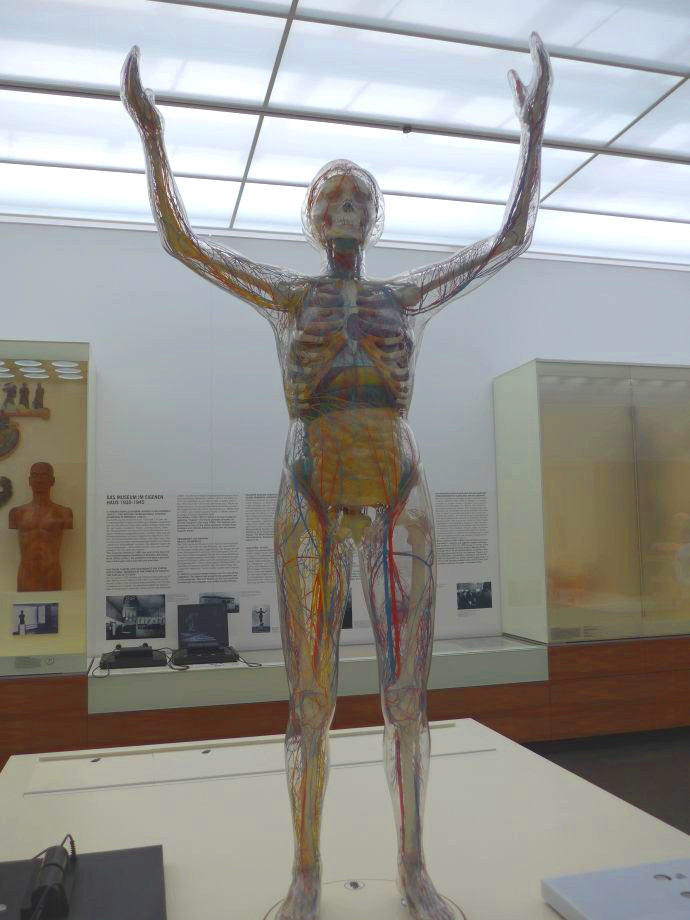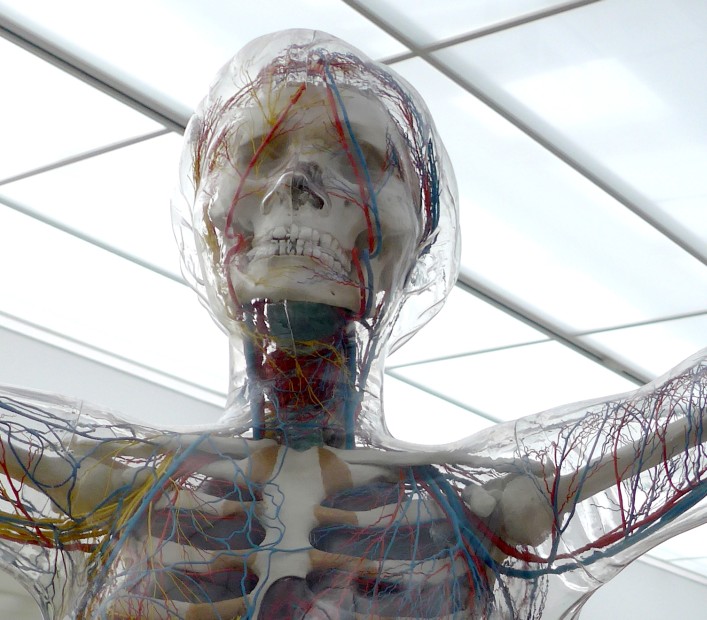This is just to let you know there’s a whole long interesting story about these people on my other blog which is on the environment (this one’s for pictures, art and travel). The short version is that 1815 a German Romantic poet and scientist (left) was on an around-the-world expedition and befriended a Pacific Islander (right) who joined the voyage to Alaska. Their many discoveries included the life-cycle of strange jelly-like sea creatures who live in chains (middle), which was strongly disuputed but later found to be correct. The poet-scientist’s book about the journey anticipated antiracism in its respectful and thoughtful accounts of people in the Americas and Pacific and today he’s a semi-big deal in Alaska and Hawaii, where he appears on this mural which was in a bank until recently. The article is here.
The Relief Map Museum in Paris
The Relief Map Museum (Musée des Plans-Reliefs) in Paris is one of my favorite sights anywhere. It has about 30 big, meticulously detailed scale models of towns, ports and forts and their surrounding landscapes. The models were built for military planning purposes from the 1670s to the 1870s.
In another room they show how they made the models, for example, grass and foliage were made of silk fibers trimmed into tiny bits using this device.
Exhibition in Paris: “Globes: Architecture and Science Explore the World”
This was an exhibit on globe-shaped and globe-inspired buildings since 1700, some actually built and some just proposed, at a museum called Cité de l’Architecture (click to enlarge)
Continue reading “Exhibition in Paris: “Globes: Architecture and Science Explore the World””
Paris – Museum of Trades and Industrial Arts
The Musée des Arts et Métiers (“Arts and Trades”) is an historical museum of engineering, communications, construction, transportation, materials and scientific instruments. Nowadays we’d call it technology but the word wasn’t in use when the museum was founded in 1794. The term arts et métiers dates back to the middle ages and meant any kind of economic activity that isn’t agriculture or trade.
Continue reading “Paris – Museum of Trades and Industrial Arts”
Transparent Woman – the anatomical model that traveled from Dresden to St. Louis and back
I finally solved the thirty-year-running mystery of whatever happened to the life-size illuminated transparent woman model in the St. Louis Museum of Science and Natural History after it closed in 1988. When it reopened as a new hands-on discovery center a few years later – with the history, charm and occasional mystery sanitized away, as in most science museums since the 1980s – the Transparent Woman was gone.

